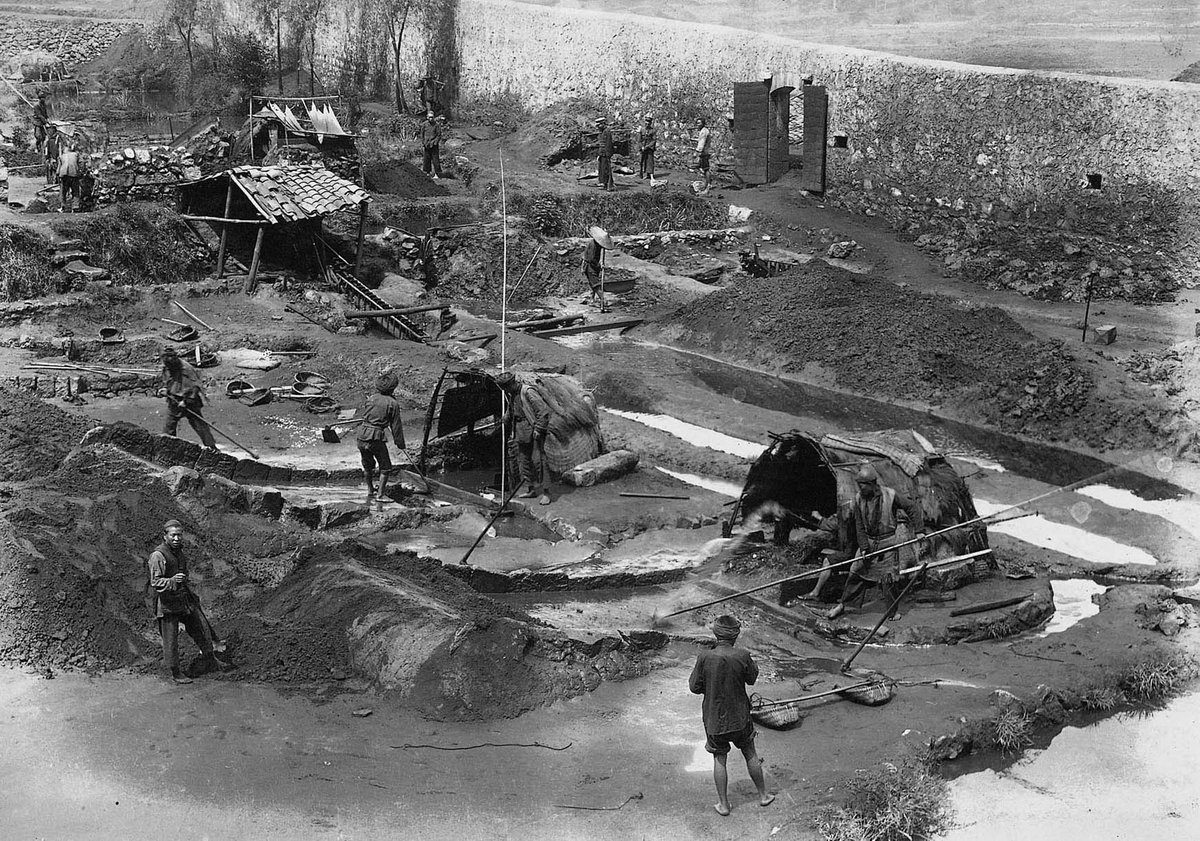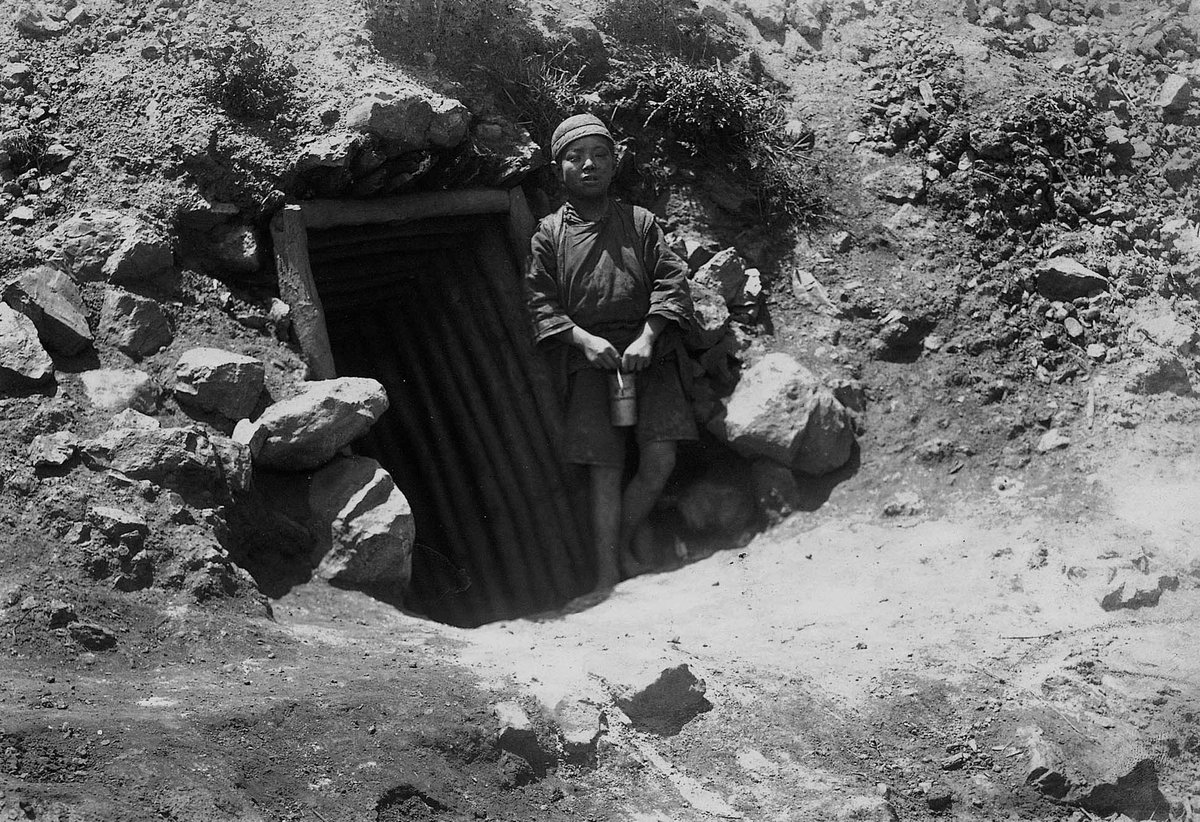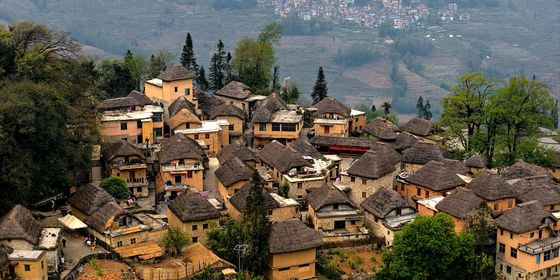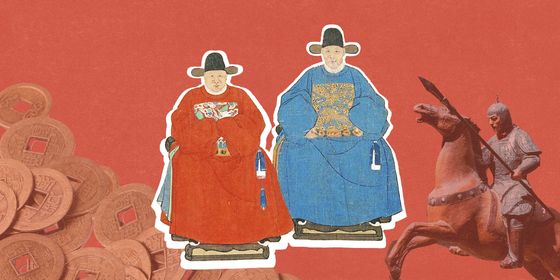The boom, bust, and rebirth of a small Yunnan city built atop mountains of tin
I emerge from the long, dark Tin Capital Tunnel, and even inside my car, it feels like the temperature has dropped 20 degrees. In Gejiu, Yunnan province, the streets are narrow and winding, dotted with complex traffic signs—the city is 85 percent mountains. I finally find a parking spot and march up Yunnan Tin North Road toward the grand lion statues guarding the front entrance of Yunnan Tin Group’s Gejiu headquarters. The building’s wall frescoes hint at Gejiu’s boom times. This company has been the largest tin producer in the world for decades.
Originally a small mining settlement, the ancient mountain city of Gejiu once contained over 900,000 tons of tin ore deposits and was important enough to be the administrative seat of Honghe prefecture until 2003. The world’s largest tin exporter, the Yunnan Tin Group, was originally founded in Gejiu in 1883. Now most of the mines are closed, but companies processing imported tin still operate in the city or remain headquartered here despite moving mining to overseas markets.
Gejiu’s tin helped the city prosper from the early 20th century into China’s period of market reforms in the 1980s. But the riches in Gejiu’s mines also encouraged environmental degradation, crime, corruption, and decline, before the city was cleaned up again in the 2000s.
The city that tin built
Nowadays, this foggy, sleepy city of around 470,000 is populated mostly by retirees, low-level bureaucrats in the local government, and people still working in the mining business.
After a short break at a discreet restaurant to enjoy some “Gejiu small sweet kebabs,” a local delicacy of pork skewers served with a bowl of grape-flavored sugar powder, and fried banana, I head to Gejiu’s main modern-day attraction: the Tin Capital Museum.
The stinging sounds of an elderly man learning to play erhu and the screeching tunes of women singing karaoke fill the air as I scamper across a large square and enter the museum.
Inside, I learn that tin has been mined in Gejiu since as far back as the Western Han dynasty (206 BCE – 25 CE). In the 19th and early 20th centuries, technological breakthroughs allowed for industrial mining of the mineral. At that time, France dominated parts of southwest China and built railways to extract resources from the country and transport them to colonial French Indochina and beyond.
Construction of a railway between Gejiu and Bisezhai, completed in 1936, connected Gejiu’s tin to the French-built Yunnan-Vietnam railway, opening up global markets for the metal. The French reaped most of the profits from the international sale of tin, but Gejiu also made money as the hub for mining the mineral.
According to a 2005 paper by Thomas McGrath, Chair of History at Muskingum University in Ohio, over 7,000 tons of tin ore per year flowed out from Yunnan’s borders in the 1910s, with 80 percent going to markets in London and New York.
People from across China made their way to Yunnan to join the tin rush and Chinese ingenuity helped raise demand for Gejiu’s product. In the 1920s, Miao Yuntai, a US-educated returnee, helped import equipment from abroad so that the Yunnan Tin Group could process and smelt its tin instead of paying foreign companies for it. Miao also helped Yunnan establish its banking system to avoid reliance on foreign financial institutions.
Lu Miannan, who received his doctorate in analytical chemistry in France in 1933, also returned and became the vice manager at the Yunnan Tin Group in 1950. Lu, originally from Jiangsu province, developed a new process that helped Gejiu tin reach higher purity levels, further boosting the industry.
Tin is important for making components used in military equipment, and Gejiu’s deposits played a key role in supplying the Allies during the war against Japan in the 1930s and ’40s. Yearly production skyrocketed to 11,000 tons, with 100,000 miners and 4,400 private mining-related businesses working in the city. Tin exports made up 80 percent of Yunnan’s foreign exchange profits. Business boomed even as war ravaged the country.
Death metal
After taking in the history at the museum and perusing local artisans’ intricately crafted tin products (including tableware and decorations), I head to Jinhu Lake (“Gold Lake”). The lake, in the city’s center, serves as the social hub for Gejiu’s residents.
Jinhu Lake wasn’t planned. In 1954, heavy rain flooded the valleys around the city. With some quick-decision making, local authorities decided to dig up the mines and surrounding areas into a hole for the water to flow into, resulting in the grand, scenic view in front of me. Tin proved to be as valuable as gold to Gejiu.
The tin mining industry grew stronger in the 1950s after the Yunnan Tin Group received aid from the Communist Party of China’s ideological allies in the Soviet Union. In those years, the state monopolized production and provided workers with accommodation, housing, healthcare, and schools for their children, until reforms in the 1980s gave the market a larger role.
As reforms opened the industry to private capital and competition, Gejiu’s resources seemed to become a curse. During the 1980s, rapid growth combined with loose regulations and dangerous practices led to a free-for-all to try and tap Gejiu’s underground riches. When some state-owned mines closed in the 1990s, some desperate laid-off workers formed gangs that dug illegally, seized mines by force, or stole ore from competitors. Explosives used for mining tunnels, as well as firearms and swords, were sold on the streets in broad daylight. Gejiu was a wild west.
Over 200,000 tons of tin was allegedly stolen from the Yunnan Tin Group in 2001, costing the company hundreds of millions of yuan. Gambling rings, prostitution, and drug use spread. HIV rates rocketed to among the highest in the country, while thousands of miners suffered injuries or fatalities in mining accidents or from long-term health complications stemming from underground dust exposure and other unsafe working conditions.
Silver bullet
It couldn’t last. Tin resources began to dwindle in the 1990s, while the environment suffered from overexploitation. In 2008, China’s State Council listed Gejiu as one of 69 “resource-exhausted cities” that needed to transform its economy immediately. A government report estimated all the tin would be gone in five years if nothing changed.
Regulations were tightened and companies had to adapt. After strolling around the historic Gejiu train station site next to Jinhu Lake, I head to the outskirts of town to visit one of the government’s new “experimental industrial zones.” There, I speak with Xu Xuwei, the CEO of Gejiu Zhongxin Metal Resources, about how his company transformed with the change. He tells me that since Gejiu’s resources are depleted, companies like his “started to look across the world while using their technological advantages to develop new industrial bases.” Just mining tin in Gejiu is no longer an option, instead, firms are importing the ore from elsewhere and smelting it here or expanding into adjacent fields like metal recycling.
In recent years, China has become a major importer of tin from places such as Indonesia, Malaysia, and Myanmar. Zhongxin Metal Resources now operates in several foreign markets, though Xu still claims he is attached to Gejiu. “I want to build Gejiu into a national industrial center,” he says. Later, the local government tells me that Gejiu’s tin industry still employs over 10,000 people, though that number has decreased over the years.
Gejiu is no longer a boomtown attracting young ambitious folk from across the country. Many of its young people seek better job opportunities in larger nearby cities like Mengzi and Kunming, or further afield in China’s more developed eastern areas. Gejiu has gained the moniker of a “mountain retirement community.”
Yet Gejiu still harbors more tin under its surface than almost anywhere else on Earth. As darkness sets in, I look out across the city from the top of Xu’s shiny company building, the streetlights flicker along Gejiu’s winding mountainous streets. Tin built Gejiu and will sustain it for a while longer.

















